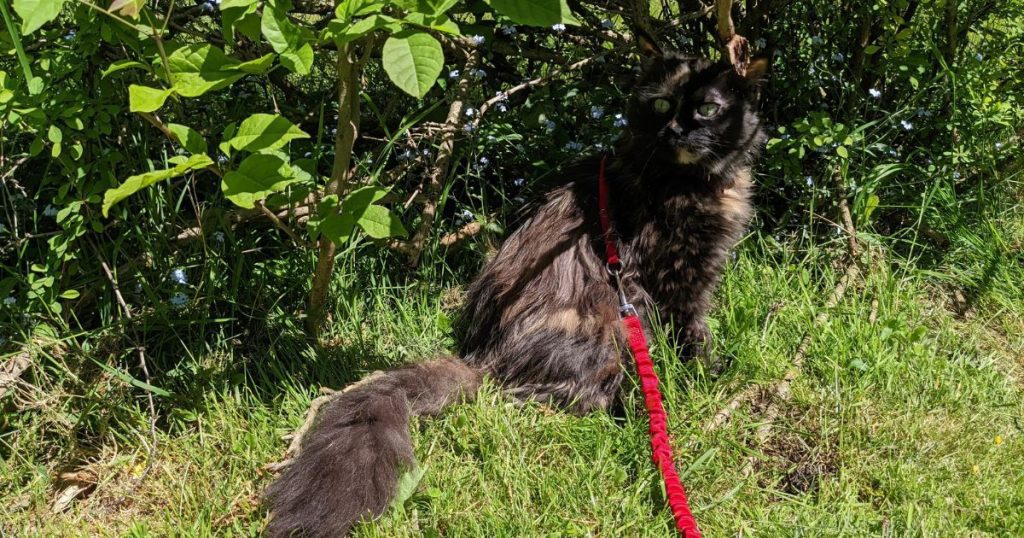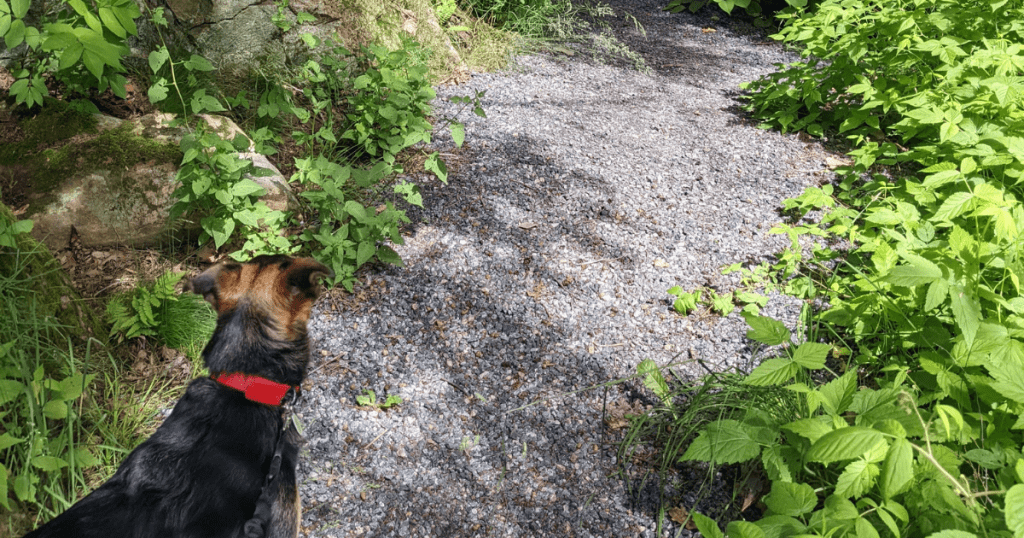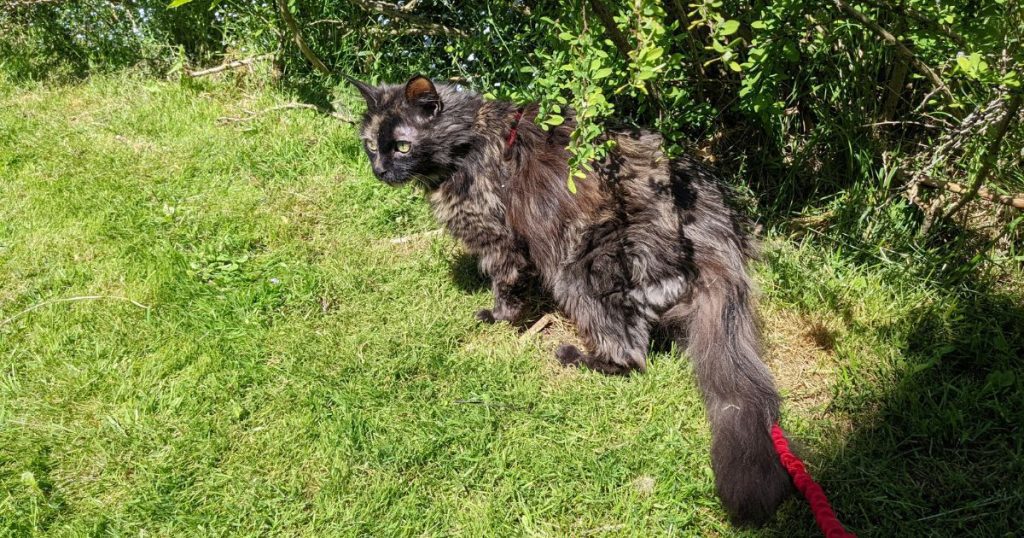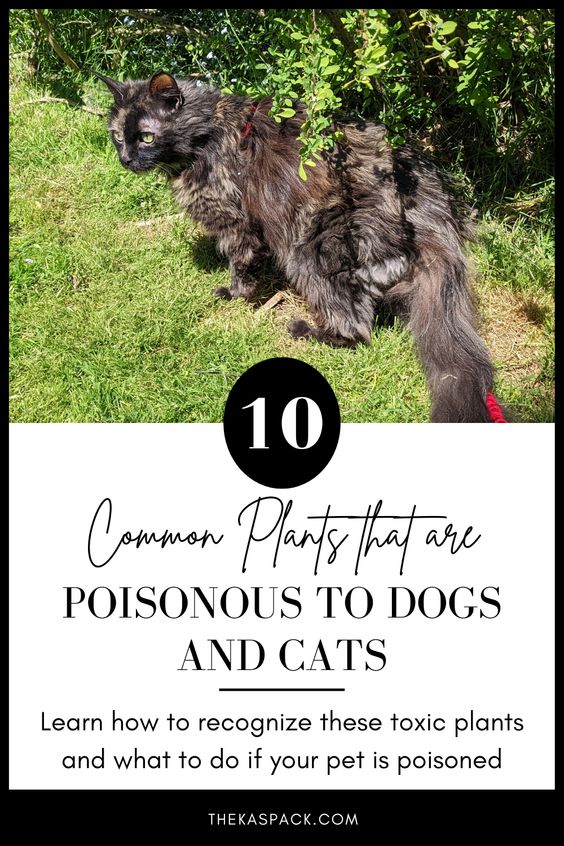10 Common Outdoor Plants Poisonous to Dogs and Cats
March is National Pet Poison Prevention Month, a time to highlight the potential risks around us every day.
For many, this awareness is focused on household poisons like the chemicals you use to clean your home or toxic foods in your kitchen. But your home isn’t the only place where you should be aware of the possible dangers.
There are many common outdoor plants poisonous to dogs and cats that you may encounter on your adventures.
Whether you’re hiking your favourite local trails or planning a pet-friendly camping trip, take the time to familiarize yourself with any local poisonous plants to pets.
This includes recognizing not only what the plant itself looks like but also the level of toxicity and how to address an exposure best.
Some plants are highly toxic and require an immediate trip to the nearest emergency veterinarian, while others may cause gastrointestinal problems that can be managed at home.

Beware These 10 Common Ontario Plants Poisonous to Dogs and Cats
Lilies
You’ve likely heard the warnings about Easter Lilies and Calla Lilies, common houseplants that are incredibly toxic to cats. But there are also wild lilies here in Ontario.
This includes the Daylily, Wood Lily, and Tiger Lily.
All parts of the lily plant are toxic to cats, including the stem, leaves, flowers, and pollen. Ingestion can lead to serious health complications, including fatal kidney failure.
Daylilies aren’t considered a life-threatening toxin for dogs but can still cause nausea. Both the wood lily and tiger lily can cause heart problems or organ failure when ingested.
If you suspect your pet may have been exposed to lilies, you should get them to a veterinarian for treatment as soon as possible.
Buttercup
Chewing on or ingesting a Buttercup doesn’t carry the same life-threatening risks as the lily.
But that doesn’t mean that it’s a good idea!
Buttercups are toxic to both dogs and cats. They can cause vomiting, diarrhea, ulcers or irritation in their mouths or a wobbly/unsteady gait.
Daffodil
While the flower of the daffodil is toxic to pets, the bulb is the most dangerous part of this popular springtime plant. This is because the toxin is concentrated in this location.
Dogs and cats that enjoy digging or exploring holes made by local wildlife will be at higher risk.
If you know you have a dog that enjoys going off and digging when exploring, you may want to avoid allowing your dog off-leash, even in designated areas. By keeping your pup close, you can closely monitor what they are doing (and eating).
Milkweed
A source of food for bees and butterflies, especially Monarch caterpillars, the Milkweed does play an essential role in our ecosystem. But, for those of us adventuring with pets, it also poses a serious risk.
Ingesting Milkweed will almost certainly cause gastrointestinal problems for your pet, including nausea, vomiting, and diarrhea.
In more severe toxicity cases, Milkweed has been associated with kidney or liver failure, difficulty breathing, seizures, coma, and respiratory paralysis.
This toxin is life-threatening, and exposure warrants an immediate trip to the nearest emergency veterinary clinic.
Tulip
There is no denying the beauty that brightly coloured tulips bring to any space. This is why so many people embrace the tulip as a wildflower and in their gardens.
Unfortunately, they contain toxic compounds that can make our pets very sick. Like Daffodils, the whole plant is poisonous if ingested, but the bulbs contain the compounds in a more concentrated amount, making them a greater risk.
Tulips aren’t life-threatening but can cause vomiting, diarrhea, excess drooling, and behavioural changes like depression.

Daisy
These little flowers are often used as a sign of peace and happiness. But your pet will not likely agree if they decide to try a few bites.
Ingested in smaller amounts, the plant isn’t going to pose any serious risks. But it will irritate your pet’s mouth and gastrointestinal tract, especially their stomach.
The plant can be poisonous in larger quantities, leading to more severe consequences like internal bleeding.
Morning Glory
Like several other plants poisonous to dogs and cats on this list, the morning glory is an irritant in small amounts.
Vomiting is the most common sign of Morning Glory poisoning in pets.
But the seeds in this flower are toxic and present a unique risk in larger quantities. They contain lysergic alkaloids, some of which are psychoactive.
Ingesting large volumes of Morning Glory seeds can cause hallucinations or extreme anxiety. They can also disrupt the body’s nervous system leading to rapid heartbeat, limb numbness, muscle tremors, or loss of consciousness.
Hemlock
There are two different plants that both share the name “Hemlock.” This includes Poison Hemlock and Water Hemlock (not to be confused with the non-toxic Hemlock Tree).
Both varieties are unsafe for our pets. They are life-threatening toxins that can cause tremors, seizures, paralysis, respiratory issues, and death.
Many plants toxic to cats and dogs are completely safe for human exposure. But this can’t be said when talking about Hemlock. Even worse, they are both often eaten accidentally because they closely represent parsnips and carrots in appearance.
If you suspect you or your pets have eaten either Poison Hemlock or Water Hemlock, you must seek medical assistance immediately.
Mushrooms
Some wild mushrooms are not only non-toxic but also make a great meal, especially for survivalists that are living off the land.
The problem is that it can be difficult to distinguish between toxic and non-toxic varieties if you don’t have the knowledge and expertise. This can lead to you or your pets accidentally ingesting something dangerous.
As there are so many different types of mushrooms, the toxicity level is a spectrum.
Poisonous mushrooms range from those that cause mild gastrointestinal problems to highly toxic varieties that can cause organ failure and death.
Unless you are an expert at identifying the different types of mushrooms, we recommend playing it safe.
Acorns
These oak tree cast-offs are a common sight when hiking your local trails during the fall season. Many well-meaning pet parents will even toss them around playfully with their pets.
Unfortunately, acorns are poisonous to dogs and cats and pose a serious choking hazard if swallowed.
In small amounts, they can upset the gastrointestinal tract causing nausea, vomiting, and diarrhea.
But too many acorns can lead to the build-up of dangerous levels of tannins in your pet’s body. This can lead to lethargy, shock, kidney damage, liver damage, or death in the most severe cases.
Additional Plants Toxic to Dogs and Cats You May Encounter
Of course, if I were to list all the toxic plants your dog or cat may be exposed to, this post could go on forever. Instead, here is a list of other potential risks you may want to research depending on your area.
If you are unsure whether a plant may be in your area, consider asking a local naturalist or nature-focused program.
Mold and Mold Toxicity in Pets
In addition to the risks of live plants that you may encounter, you should also be aware of any vegetation or plant life that may be decomposing around you.
Plants like the Black Walnut Tree aren’t dangerous when they are in their prime. However, when the walnuts are shed and start to mold or break down, they become a toxic risk for your dog.
Exposure to moldy black walnuts can cause tremors, loss of coordination, or seizures. Other forms of mold can also lead to organ damage and other dangerous health problems.
If your dog has been nosing around and munching anything that has been decomposing, contact your veterinarian to discuss your concerns. They will be able to advise whether you should be making an immediate appointment or what to watch out for.

What are the Signs of Toxicity in Pets?
If you spot your dog or cat taking a bite of something toxic, it’s easy to recognize the situation. But it’s not always that obvious.
Many cases of poisoning occur when your pet is exploring the environment. Whether they are hanging out at the campsite or leaving the trail off-leash to check out the bush around you, there is the chance that they will be exposed to something concerning.
For this reason, all pet-friendly outdoor travel lovers must learn the warning signs of poisoning in their adventure buddies.
Some of the more common signs to watch out for include the following:
- Nausea
- Vomiting
- Diarrhea
- Loss of appetite
- Abdominal pain
- Excessive drooling
- Coughing or sneezing
- Rapid breathing
- Difficulty breathing
- Fever
- Increased or irregular heart rate
- Swelling or inflammation
- Agitation
- Reluctance to be touched
- Loss of coordination
- Tremors
- Seizures
- Jaundice (yellowing skin or eyes)
- Weakness, collapse or coma
If you notice any of these signs of poisoning, err on the side of caution. Treat the situation as if your pet has ingested something toxic and respond accordingly.
What Should You Do if You Suspect Exposure to a Toxic Plant
One of the most important things you can do in preparation for camping or hiking with your cat or dog is to learn how to respond in an emergency.
Even if you are fully aware of the potential risks and completely alert during your adventure, there is a risk that your pet may ingest something that they shouldn’t. Accidents happen- that’s what they are called accidents!
- Remove your pet from the toxin immediately. This may mean moving your pet onto the path while hiking so that they can’t access the plant or, when possible, completely removing your pet from the area.
- Check your pet’s vitals. Ensure that they are conscious and breathing correctly. Take note of any odd behaviours or signs that something may be wrong.
- Call the Pet Poison Helpline (1-800-213-6680) or your veterinarian immediately. The Pet Poison Helpline is available 24/7 in Canada, the United States, and the Caribbean. You will be connected with an expert to help you identify the best course of action for your pet.
- DO NOT induce vomiting or give your pet any home remedies/antidotes while waiting for someone to answer your call. These options can make the situation worse.
- If immediate veterinary care is needed, get your pet to the nearest veterinarian or emergency veterinary clinic as soon as possible.
- For backcountry campers or hikers a long distance from the trailhead, ask the expert on the phone if there are recommended steps to take, given the longer transport time.
Without leaving your pet at home, there is no way to guarantee that you will never encounter plants poisonous to cats and dogs.
However, by educating yourself on what to look for and the best steps to take in the event of a poisoning, you can improve the odds that your pet will walk away from the experience without long-term health complications.
You can also decrease the risk by staying alert on the trails and training your dog key hiking-related commands such as “Leave It” and “Drop It.”

Are there any plants poisonous to dogs and cats in your area that didn’t make the list? If so, we invite you to share this information with other outdoor travellers by dropping it in the comments section.
